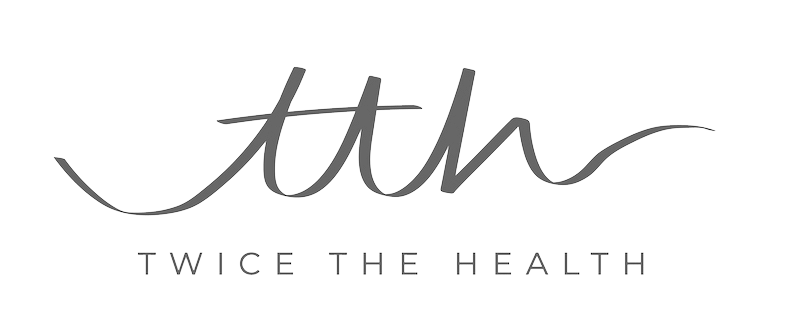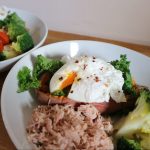“I’m tracking”
“IIFYM”
“I’m cutting my macros”
“I’m shredding”
“I’m cutting”
…“I’m confused!”
The craze is real, everyone has gone a little macro mad, but for the everyday Joe who simply defines food as healthy, or unhealthy this be a little boggling to the brain!
The three key components to the foods we consume suddenly become host to a whole new dictionary. Be it equations or opinions each is deemed good, bad or ugly and with this comes confusion, rash decisions and in many cases results in under eating. Have no fear, we’re on hand to help. We want to educate you to understand the simple science allowing you to make better decisions with your meals and snacks.
So what really are ‘macros’? These are your macronutrients; protein (PRO), carbohydrates (CHO) and fats (FAT). The amounts your body needs can be calculated by working out your total daily energy expenditure (TDEE); by adding together your basal metabolic rate (BMR), thermic effect of food (TEF), non exercise activity thermogenesis (NEAT) and thermic effect of activity (TEA). This collection of long worded terms basically means the calories we use just by being alive, digesting food, day to day activities, and exercising. Then depending on your lifestyle, preferences and goals your TDEE is dived between the three macronutrients to form your ‘macro split’.
There are a number of reasons people like to calculate their macros, and ‘track’ these for periods of time. This could be to align with a certain goal, or prepare for a certain event. The most common way of aligning to a goal is measured by the outcome, for example someone trying to lose weight would place themselves in a ‘deficit’ reducing their overall calories. Where as someone trying to build muscle would increase their overall calories to put on ‘mass’. This can be calculated through percentage of overall intake.
If an individual is preparing for an event, they may focus on certain macros to improve performance. For example if someone has a TDEE of 2,000kcal and it is the day before an endurance event their macros may be 20%PRO, 70%CHO and 10%FAT. This equates to 400kcal, 1400kcal and 200kcal from PRO, CHO and FAT respectively. This of course will differ to their everyday macro split which might for example be 35%PRO, 40%CHO, 25%FAT, which equals 700kcal, 800kcal and 500kcal from PRO, CHO and FAT respectively. This is one example of using ‘calculating macros’ to boost performance. The CHO level is higher the day before a long race to allow for extra glycogen (energy) to be stored and ready to use up the following day.
Percentage breakdown is the most common way of forming the split, and allows the calculations to remain relatively simple. Of course this can be advanced by calculating the weight (g) you should be consuming of each macronutrient. Roughly speaking, both PRO and CHO offer 4kcal/gram and FAT provides 9kcal/gram. This is why oils, avocados and nuts appear to be very calorific for their size as they are high in fat. So, if you were using the same example as above; 2,000kcal with a macro split of 35% PRO, 40% CHO and 25% FAT you simply divide the amount of calories for each macronutrient by their kcal/gram. For example PRO would be 700/4 =175g, CHO would be 800/4 = 200g and FAT would be 500/9 = 56g.
And of course there’s more for those who want to get super geeky on their gobble! Once you have your TDEE calculated (for example 2,000kcal), you can break it down further, looking at how much CHO said individual should be consuming for their age, gender weight, lifestyle and goals. This is usually between 4-10g CHO per kg of bodyweight, which will then equate to give you your recommended g/day of CHO. Next you do the same for PRO; which is anywhere between 0.8g-2.5g PRO per kg of bodyweight, again providing you with g/day of PRO. You can then covert your g/day of CHO and PRO to kcal/day by multiplying each number by 4, and adding them together. Once all those calculations have been done and you’ll be left with a final figure. To calculate your remaining kcal/day of FAT you simply minus this said number from your TDEE and divide it by 9. You’re then left with your total portion for each macro in grams and kcal.
(This is NOT right for everyone this is just a VERY generalised example!)
There are lots of online calculators and apps to help you work out your TDEE and macros.
There is also plenty of research on grams of CHO and PRO per kg body weight. Alternatively email E (twicethehealth@gmail.com) and quiz away!
The next mistake easily made when measuring macros is the understanding of what’s in what! For example 100g of chicken does not equate to 100g of PRO, nor does 100g of pasta equal 100g of CHO. On average 100g chicken breast provides 31g PRO, 0g CHO and 3.6g FAT. Again, the apps can come in handy here. MyFitnessPal allows you scan in your food using the barcode then all you have to do is weigh it! Simple!
And that’s the tough bit covered. Next to breakdown the five letters on everyones lips… IIFYM. This stands for “If It Fits Your Macros”, and basically allows you to manipulate your daily food intake to make sure you can still satisfy your guilty pleasure! Sounds great right? Afraid not! Often it’s this loose ended approach that leads to loss in nutrients and in some cases a very dangerous take on nutrition. On paper you could be meeting your macronutrient needs, but in reality your feeding your body with processed refined foods. We’re not saying don’t treat yourself, all we’re asking is that you remember the micros (micronutrients) as well as the macros. These are your vitamins and minerals that play a key role in fulfilling your optimum health. A whole host of nasty symptoms come hand in hand with iron, vitamin D, magnesium, and vitamin A deficiencies…and thats just to name to most common! We like to stick to 80/20, meeting 80% of our dietary needs with wholesome food sources and allowing the other 20 to come whatever biscuit tin, or protein pudding you wish.
And last but certainly not least, the loose terms you see splattered over social media… “cutting”, “shredding” and getting “ripped”. No this does not mean that your favourite FitFam idols have tapped into a new hobby of topiary, these are common terms associated with cutting (reducing) your macros in order to shred (lose) fat and look ripped (lean).
For 80% of the year we stick to maintenance macros, to ‘maintain’ a shape we sit happy at. During this time, we find ‘tracking’ unnecessary. It can be fairly time consuming and if not monitored can easily become an obsession. Food should be about enjoyment, and plays a huge part in our social lives therefore tracking all year round is not part of OUR sustainable lifestyle. We might track our maintenance days 2-3 times a month just to make sure our portion sizes are in check, but other than that we focus on how we feel. For 10% of the year we sit a little higher than usual on an increase, which is usually ‘high carb’ to prep for and recover from our endurance events. For the final 10% of the year we rein things in a little by keeping food diaries, with the aim of tightening things up ahead of shoots and big events. We never make any drastic changes to our macros, and will never aim to lose more 1-2kg of bodyweight. We’re happy and comfortable in our bodies the way they are, and with our endurance events being our main focus, we prefer strength over skin and bones, but sometimes knuckling down for a few weeks can challenge you in different way. After all it’s only human nature to wish to better what we can when life throws a day of flashes at you.
So this is our breakdown of the science behind the shred. It really has to be no more complicated than this, and understanding more about macros is often a step in the right direction to improving your diet. Just remember, it’s not the be all and end all, and is not something we suggest you indulge in everyday. Like everything, moderation is key!
TTH x



